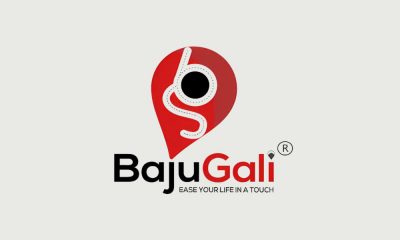OOH Adtech
pDOOH: Powering OOH growth every step of the way
Remi Roques, GM Broadsign APAC delves deep into pDOOH’s meteoric rise

The out-of-home (OOH) advertising landscape, once dominated by the direct selling of static billboards offering fleeting glimpses of brand messages, is undergoing a dynamic transformation. Enter programmatic digital out-of-home (pDOOH), a disruptive force rapidly reshaping how brands connect with consumers in the physical world and you have an advertising powerhouse.
Since its introduction in the second half of the 2010s, pDOOH has witnessed phenomenal growth, leaving its direct-sale traditional counterpart in the dust. To understand the depth and breadth of its significant growth to date, we must delve deeper into pDOOH’s meteoric rise, exploring its advantages, the factors fueling its expansion, the potential roadblocks it may encounter, and its ultimate impact on the advertising landscape.
A digital boom with granular targeting
The transition from static displays to dynamic digital screens has revitalised the OOH industry. DOOH revenue has experienced a staggering 50% annual growth compared to a stagnant static OOH market. However, the true growth story lies within DOOH itself. pDOOH, with its programmatic buying capabilities, has witnessed a phenomenal 100% annual growth, doubling its revenue year-on-year.
This remarkable growth is driven by a strategic shift in advertising budgets. A significant portion (73%) of this revenue increase comes from advertisers and agencies strategically allocating a portion of their online advertising budgets to pDOOH campaigns. This shift reflects a growing understanding of the unique reach and impact of OOH advertising within a holistic marketing strategy. Additionally, a third (33%) of agencies and advertisers have already increased their pDOOH spending and project further investments in 2024, signaling a growing confidence in this innovative advertising channel.
But why the price premium?
Compared to traditional, direct sales of OOH ad space, programmatic buying offers several advantages that justify a 30% to 300% increase in price, or more precisely Cost Per Mille (CPM) of the inventory. The key differentiator lies in data-driven targeting. pDOOH leverages sophisticated audience measurement tools, allowing advertisers to reach specific demographics at precise locations and times. Imagine a fast-food chain targeting hungry office workers during their lunch break on digital billboards near business districts. This granular targeting ensures a higher ad exposure to the most relevant audience, leading to a higher ROI compared to traditional OOH advertising that relies on a more scattered approach.
Beyond targeting: Efficiency, flexibility & omnichannel integration
pDOOH offers significant benefits beyond targeting. It simplifies the agencies’ buying process, a factor crucial for securing advertiser trust and budgets. The traditional method of booking OOH ad spots involved manual negotiations with individual media owners, which is time-consuming and cumbersome. With pDOOH agencies have more time to spend in approaching brands and negotiating new campaigns. Agencies spend less time delivering an approved media booking.
Programmatic buying streamlines this process by providing a single, internet-accessible platform—the demand-side platform (DSP). This platform allows agencies to purchase DOOH inventory from multiple media owners, saving valuable time and resources. It also fosters transparency, allowing agencies to adjust campaigns in real time based on advertiser needs or emerging trends. For instance, an advertiser promoting a weather-dependent product like sunscreen can leverage real-time weather data and adjust their pDOOH campaign to target areas experiencing a heatwave.
Moreover, the ability to manage both online and pDOOH campaigns within the same DSP simplifies reporting for advertisers, providing a holistic view of their omnichannel strategy. Imagine a seamless transition from a mobile social media campaign to a targeted pDOOH encounter, reinforcing the brand message and driving consumers towards a specific call to action.
pDOOH also allows agencies to adjust a campaign during its execution. This is crucial to ensure that their advertiser clients’ goals are achieved. If a campaign is not delivering its results, advertisers can change the targeted inventory or campaign conditions, giving agencies the impression that they are in the driver’s seat.
The pioneering markets & importance of unified audience measurement
The adoption of pDOOH has been uneven across the globe. North America, Europe, and Australia have emerged as the frontrunners, driven by their advanced DOOH infrastructure and a culture of innovation. These markets boast a wide network of digital displays strategically placed in high-traffic areas like transportation hubs, retail districts, and entertainment zones. Additionally, they have invested in robust audience measurement systems that provide agencies with reliable data on audience reach and demographics. This data is critical for programmatic buying, allowing agencies to make informed decisions and justify the premium pricing of pDOOH.
The road ahead
While pDOOH offers undeniable advantages, it faces hurdles in certain markets. The absence of standardised audience measurement systems can hinder programmatic buying. In such cases, agencies face difficulties in price negotiation, and advertisers hesitate to pay a premium for pDOOH due to a lack of trust in the data. This highlights the need for global industry collaboration to develop unified audience measurement systems, fostering trust and accelerating the adoption of pDOOH in emerging markets.
Education continues to be a concern in some markets, where agencies still do not know that DOOH products can be purchased from the same DSP used for online purchases.
Programmatic pricing itself also remains a challenge. However, the value proposition of pDOOH is undeniable, particularly in markets with high DOOH adoption. As this technology matures and data becomes more standardised, we will continue to see exponential growth for pDOOH in the coming years.
-

 People
PeopleSonal Kabi elevated as Director and Head of Marketing at Prime Video & Amazon MGM Studios – APAC & ANZ
-

 Brand Insights
Brand InsightsRajat Sikder, Director, Walk The Talk shares his top 3 campaigns of 2025
-

 Campaigns
CampaignsPronto’s sweeping OOH campaign
-

 Campaigns
CampaignsRishabh Builders launches OOH campaign across Raipur














